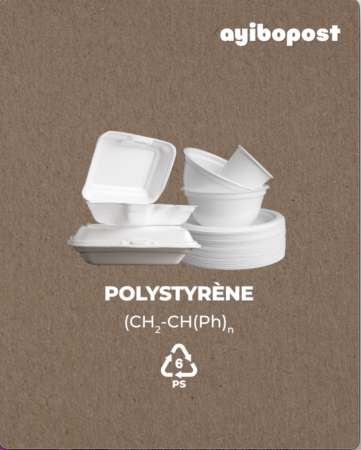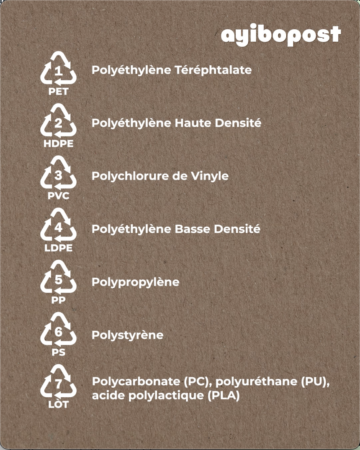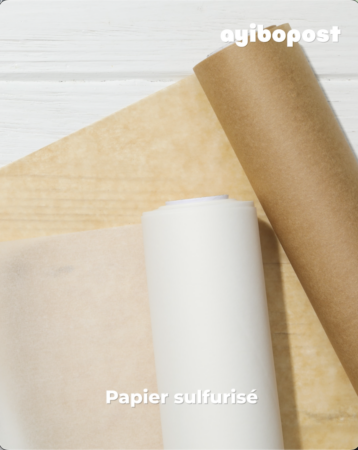And it’s not just suffocating food with the bag, the habit of drinking water from the bag is also dangerous
So far, we all have at least one person around us in Haiti who is still suffocating food with plastic bags. Not true ?!
Anyway, my dear, today, AyiboPost draws our attention to the dangers of this practice, while we propose you other very simple techniques! And it’s not just suffocating food with the bag, the habit of drinking water from the bag is also dangerous. Gather us to listen!
We often see, either on the street with food vendors or at home, people using plastic bags to smother cooked food. If it is true that the bag can suffocate food and allow it to cook quickly, then my dear, this practice is not good for health. Why?
The first thing we must know is that when the plastic is exposed to heat, it becomes more dangerous to cause serious health problems.
A clear example of water, for those who are used to suffocating food with bags, don’t you notice when you suffocate the food, the plastic becomes softer under the heat? Well, that’s the problem. When you put a hot food in a plastic bag or use plastic bags in the cooking process, the heat causes all the toxic chemical properties to enter the food as well, and go directly to your body.
When the plastic is exposed to heat, it becomes more dangerous to cause serious health problems.
In general, in scientific language, what we call plastics are “polymers” that they are. Polymers are a set of small molecules or they are called “monomers” that are assembled to give what is called “polymer”.
Alas! You look up, yes, let’s land! To understand better, let me show you the example of the polymer, let’s see: this is polyvinyl chloride, in current language it is PVC:
This is polyvinyl chloride, in the current language it is called PVC.
This itself is « polystyrene« , we call them cardboard plates:

Polystyrene: what we call cardboard dishes in Haiti
And this is called polyethylene » are: plastic bags, water bottles, etc.

Polyethylene: plastic bags, water bottles…
There are many, many other types polymer still, their use varies from one product to another, for example a polymer used to make children’s toys is not the same as a polymer used to wrap a candy or a small chocolate. But what is clear is that when we see them, the first thing we say is plastic! Not true ? I’m not against you! But it is important to know in which category each one is, and that they are “des polymers”.
You can also read: Nutrition: how can a dietitian help us improve our health?
We must know that polymers are a series of chemical substances from petroleum and natural gas, which, according to chemists, are methane and other hydrocarbons such as ethane, propane, butane, etc., however, these are big words. . But, so far we have agreed that what we are telling them should not be related at all to what will be in our stomachs, right? Let’s move forward!
To return to the plastic bags, in Haiti there are many, we know, there are black, there are white, there are pink, there are white and black, there are pink and white, well we can’t finish citing. What has happened is that here in Haiti we do not know in detail all the compositions that each one has. Well, as we already know, many are imported into the country, and there is no real control and exact precision on what they do, but we know in general that they are “polymers” and they come from the “polyethylene” category. , and that’s what we’re leaving with. Let’s focus!
In order to understand the migration process of these chemical compounds, we are talking about “polyethylene” in what we eat, AyiboPost managed to talk to Michaëlle Sinéus who is a specialist in chemistry, who allowed us to put our feet on the ground. Oh yes!
If it is true that the bag can suffocate food and allow it to cook quickly, then my dear, this practice is not good for health.
According to the specialist, the main danger lies in the exchange between the packaging and the food. In this exchange, there is the possibility of finding a team of endocrine disruptors in them, if we take chemicals such as Bisphenol-A, Styrene, and antimony dioxide, etc., which are really dangerous to health when you have a small consumption the two of them. And the consequences are not negligible, these gradual consumption leads to diseases such as cancer, fertility problems, respiratory diseases and many more.
The chemist goes further to say that the practice of drinking water from bags is the practice of suffocating food with bags, a series of long-term practices that can lead to two serious public health problems in Haiti. Why? Because these “polymers” have an automatic way of entering what we consume, especially when they are exposed to the sun, to heat and even to a low temperature. He gives a very simple example.
It hasn’t happened to us to put a bag of water in the refrigerator and in the same space we would have spices in it, after a while what happens? When you drink the water, don’t you feel the taste of the spice directly in it? Well, it’s not in your head, it’s effectively the polymer that absorbs the micro-molecules of these elements that are outside, put into the water, and this absorption is done with the toxic chemical “particles” that are in the polymer itself. what the chemist calls the “permeability of polymers”. Well, that’s another topic that can even make a separate video!
It is a way to show us with these same procedures how food can contain toxic elements that are not good for our body.
That is the practice of drinking water from bags, that is the practice of suffocating food with bags, is a series of long-term practices that can lead to two serious public health problems in Haiti.
This is what is done in countries that have control over what is produced and what the population uses, there are signs you will notice on the packaging of these polymer products that show the classification of this product, if we take these examples.

Some sig on the packaging of the “polymer” products, which shows their classification.
Kelly Célestin, who is an internist, also spoke to AyiboPost and went along the same lines, “It is not recommended for people to use plastic bags to put hot food or to suffocate food”. It is not good for health, and it gives the diseases we just mentioned. But according to the doctor, in Haiti there is really no way to detect when someone is sick if these toxic elements are exactly the cause of the disease. Well we know, we don’t really have research and studies done on this in the country.
But the practice has its consequences, and it remains a habit to avoid.
Now, let’s see what we can replace the plastic bag with.
We are aware of the practice of suffocating food with plastic bags for a long time in society, but we must be aware of the serious health problems this can cause and be more responsible in this regard.
I agree with you, suffocating food as a culinary practice we have in the Haitian society, which will not change today. But instead of the plastic bag, we can use other elements that are adapted to that.
For example, Chemist Michaëlle Sinéus proposed such as “sulfurized paper, which is a paper made for cooking, even used in cooking.”

Sulfurized paper, which is used to cook even.
But as we know that not everyone will find the sulfurized paper, AyiboPost managed to ask several adults who know how to cook without plastic to propose some practices, such as: when we are suffocating the food, make sure we have a pot cover which is well placed on it, which does not include even a small space between the lid and the pan so that air does not pass.
Another tactic, we can take a smaller pot cover that can fit into the pot and then add the big cover.
Another thing, if we go back to the past, when there weren’t all these plastic bags on the market, banana leaves used to do the job well. But good!
You can take advantage of this report published by AyiboPost on the production of quality cocoa and chocolate in Haiti:
Attention, we do not say aluminum foil, we do not say fabric, because they also have their own disadvantages, which we can address in another video.
What is important is that we must avoid taking all risks, to avoid exposing our health and endangering our lives in what we eat!
▶ Search and text: Lucnise Duquereste
▶ Production and installation: Max Kendlay K. Toussaint
▶ Camera : Sherlande Pierre
To stay connected with AyiboPost:
▶ Integrated channel Telegram our : click here
▶ Integrated channels WhatsApp our : Click here
▶ Community Integration WhatsApp our : click here






